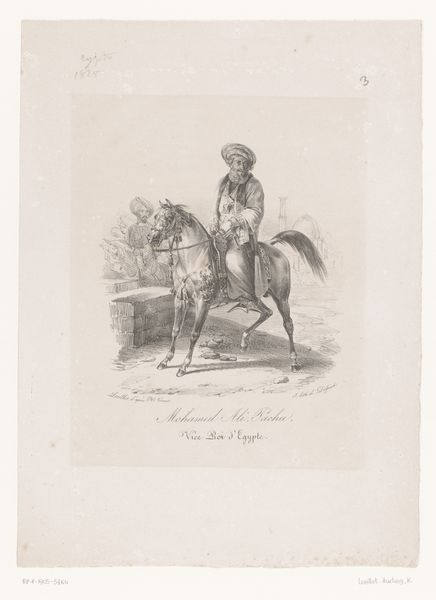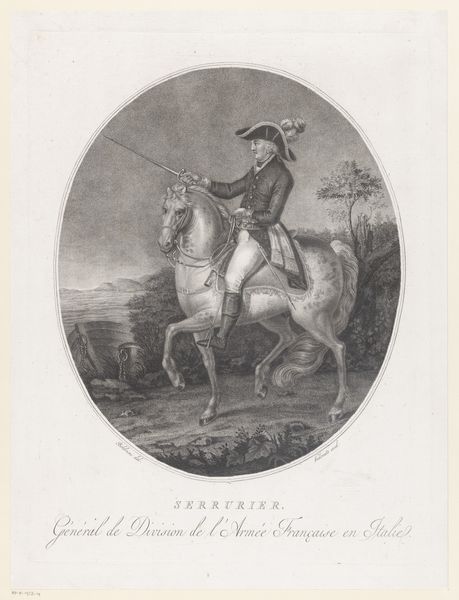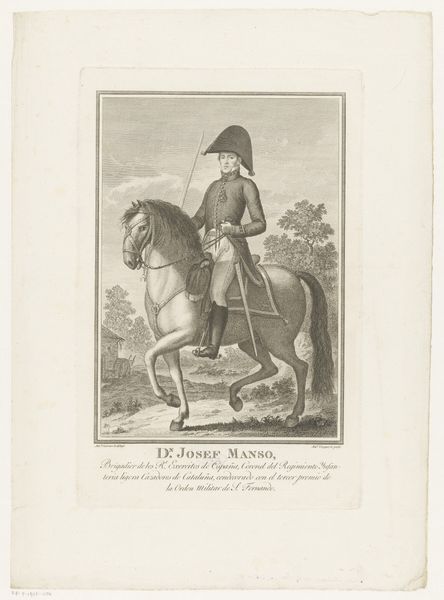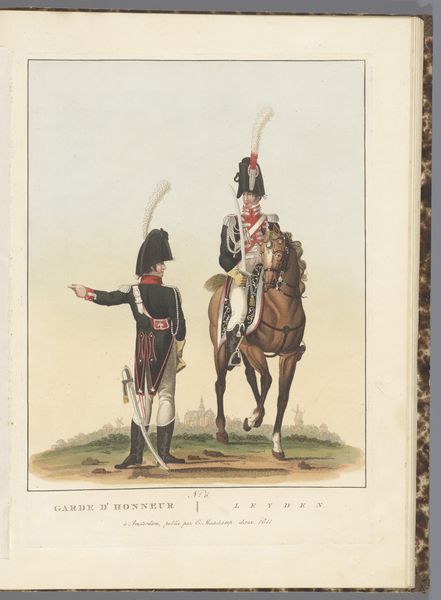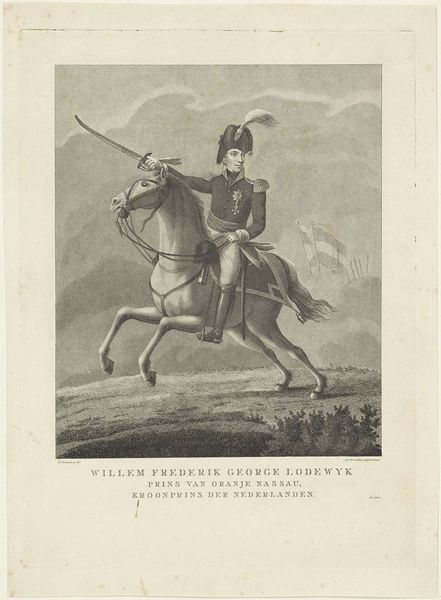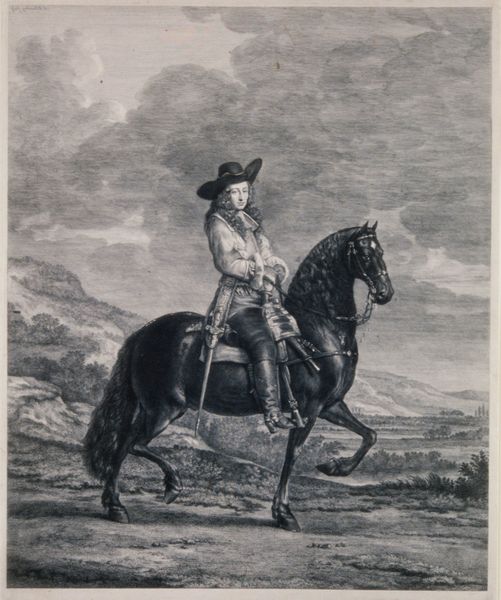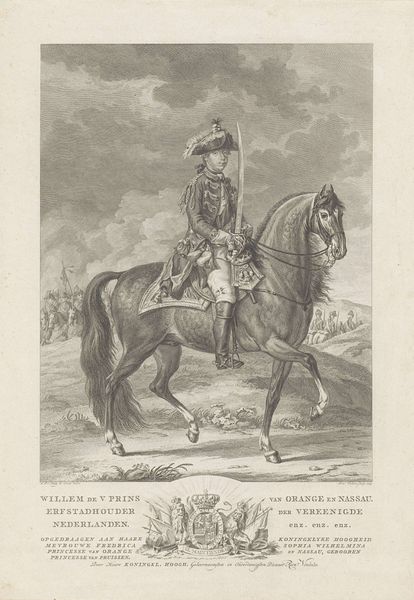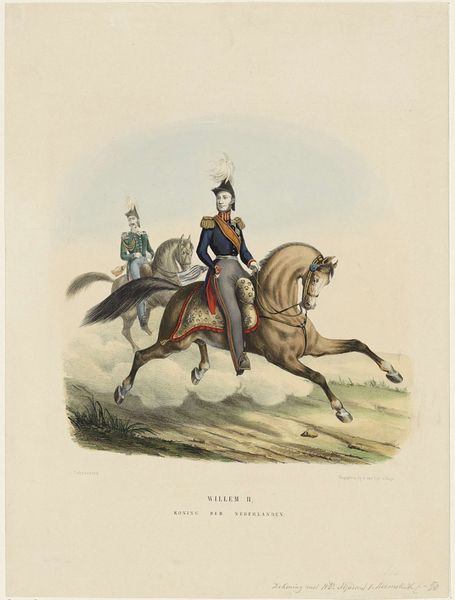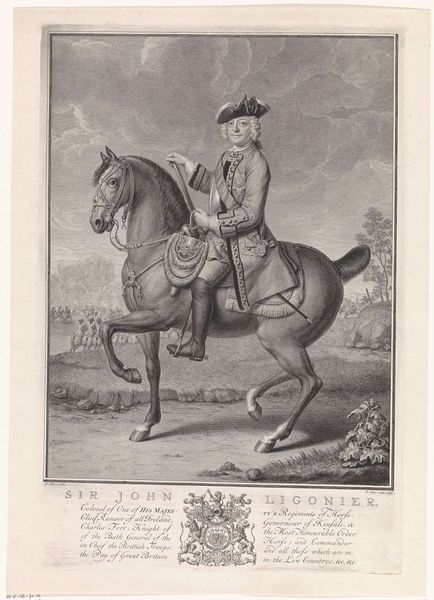
print, engraving
#
portrait
#
neoclacissism
# print
#
old engraving style
#
history-painting
#
engraving
#
erotic-art
Dimensions: height 278 mm, width 187 mm
Copyright: Rijks Museum: Open Domain
Editor: Here we have a print portraying Francisco Xavier Mina on horseback. The engraving, dating to around 1774-1815, feels very much like a celebration of power, but something about the somewhat stiff pose feels a bit performative. How do you interpret this work? Curator: Well, beyond the surface-level glorification, I see a visual text deeply embedded within a complex web of power, identity, and resistance. Consider the historical context: Mina was a controversial figure, a Spanish military leader who fought against Napoleon but later opposed the Spanish monarchy. This portrait, likely commissioned, aims to construct a specific image – one of heroic leadership. But does it succeed, or does it reveal the inherent tensions within Mina's own shifting allegiances and within the broader struggles for independence in the Americas? Editor: That's fascinating. I hadn't considered the conflicting loyalties. The portrait almost seems to ignore the complexities you mentioned. Is that typical for Neoclassical portraits of this era? Curator: Often, yes. Neoclassicism, with its emphasis on order and idealization, served as a powerful tool for projecting authority and legitimizing political agendas. But even within its rigid framework, there are fissures. Look at the horse – is it a symbol of strength, or of subjugation? How does Mina's posture – his grip on the reins, the raised sword – speak to control, not just over the animal, but also over his own image and the narrative surrounding his actions? What audience did this want to impress? And whose story is excluded in this very image? Editor: I see what you mean. It’s like the image is trying too hard to convey a singular message, and in doing so, it reveals all these underlying tensions and power dynamics. Thank you. Curator: Indeed. By questioning the dominant narratives embedded within seemingly straightforward portraits like this, we can begin to unpack the intricate relationships between art, identity, and political struggle.
Comments
No comments
Be the first to comment and join the conversation on the ultimate creative platform.

